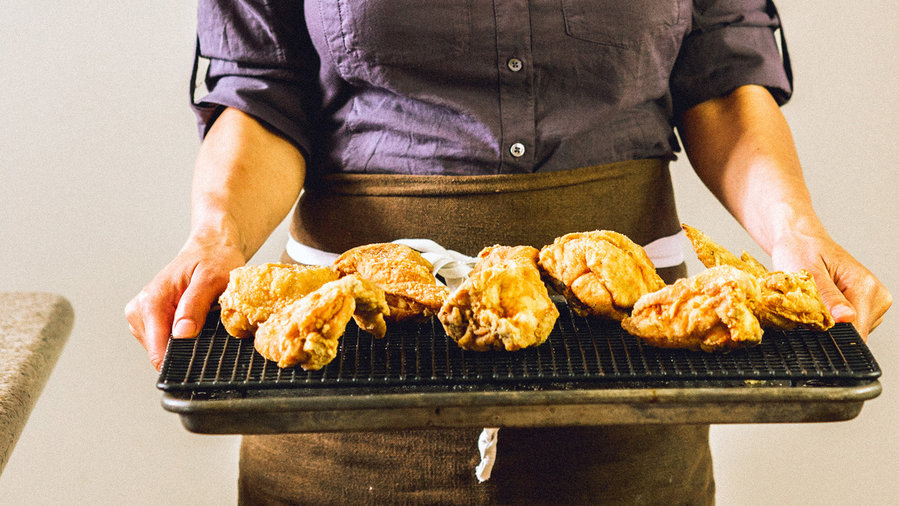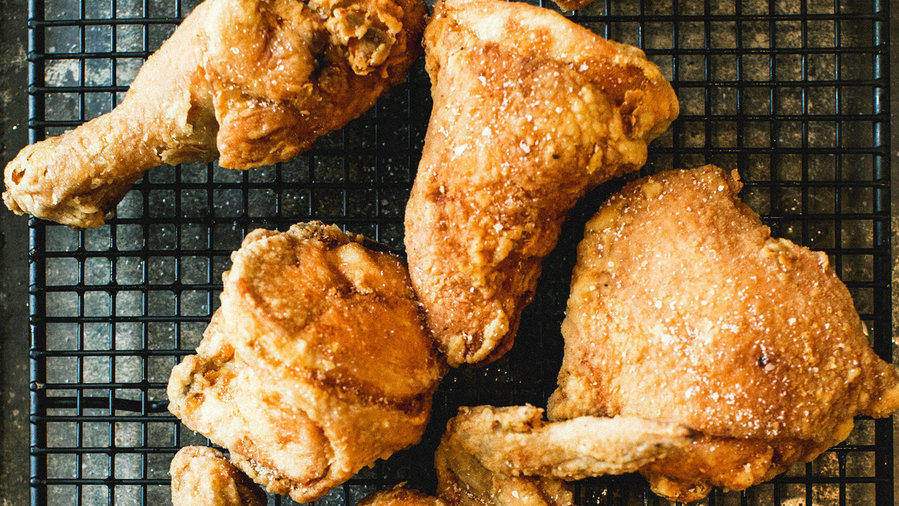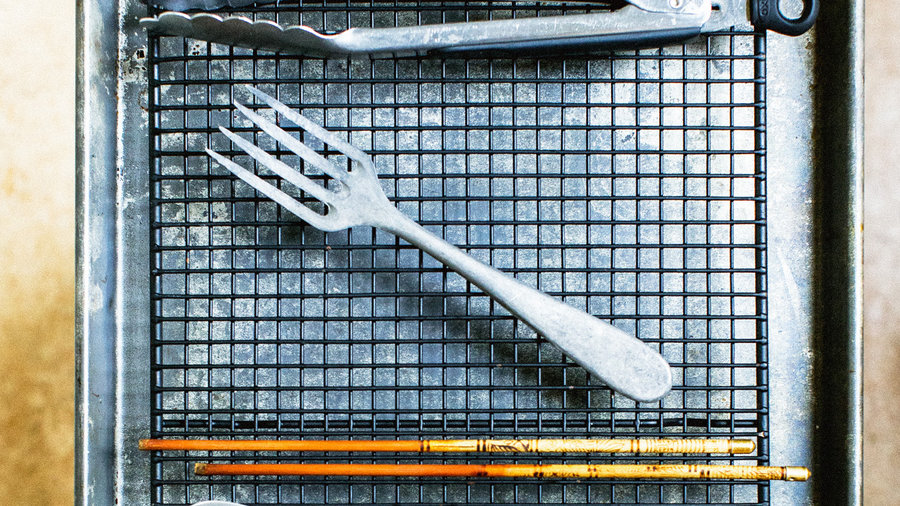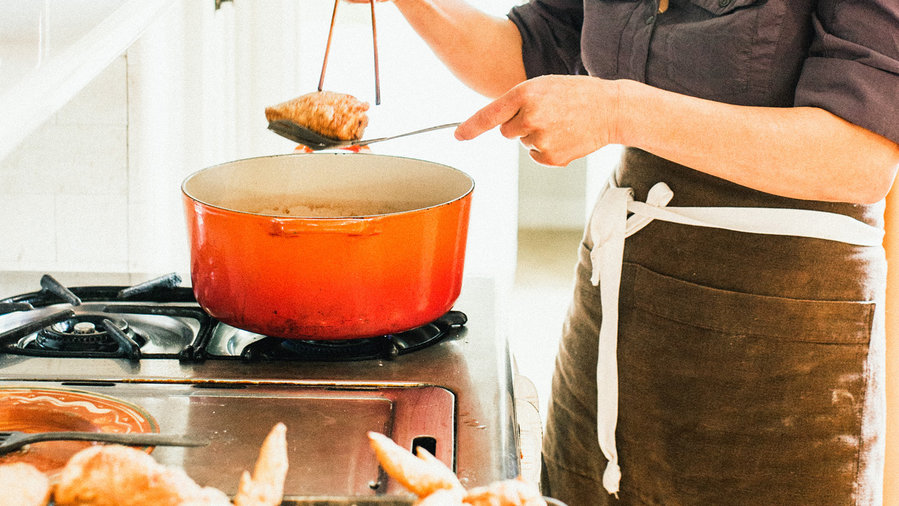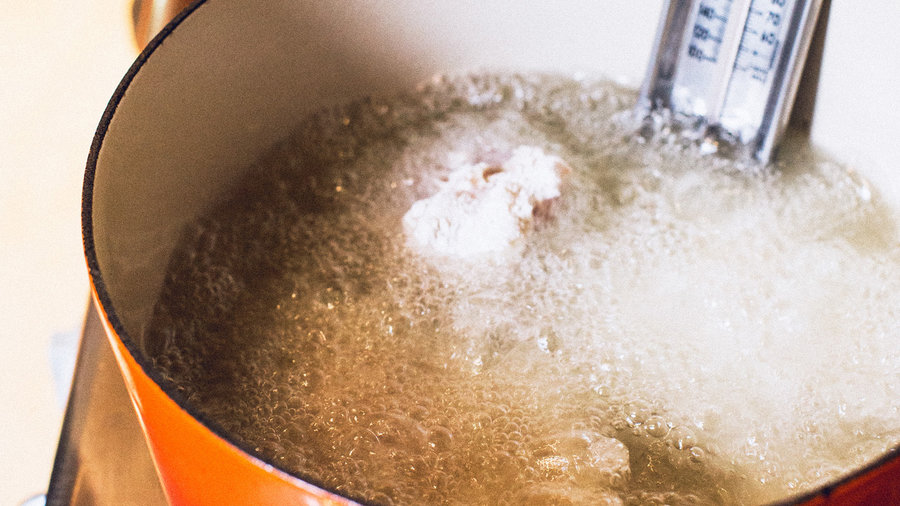Thomas J. Story
The Fry Queen
Few summer foods can trump crisp, juicy fried chicken. And few cooks can make it as well as Julia Lee, known to her colleagues in the culinary world as the Fry Queen. Lee mastered frying while working on the PBS shows of chefs Martin Yan and Jacques Pépin. “Martin taught me how to fry, not just chicken but everything,” says Lee, who lives in San Francisco. “Jacques showed me that if you fry correctly, you actually use very little oil—less than if you sauté.”
Thomas J. Story
Tasty treat
Lee—who teaches at San Francisco’s Tante Marie’s Cooking School and still works with Yan—fries chicken at least once a month. “It’s great right out of the fryer, but also at room temp on a picnic—or ice cold straight from the fridge,” she says.
Her career highlight so far? Making fried chicken for Public Enemy in 2002, at B.B. King’s in Manhattan: “I came back 10 minutes later, and it was just bones.”
Thomas J. Story
Essential tools
Deep-fry thermometer. Lee knows when the oil is hot enough simply by how it looks: “It becomes reflective, almost like a mirror. But when you’re just starting out with frying, a thermometer is imperative.”
Heavy, deep pot. “I prefer cast iron, plain or enameled. It does a better job of maintaining heat.”
Splatter guard. Get one with a very fine mesh to trap the oil. Lee’s also has little feet on it, so it can rest on a surface without creating a mess.
Chopstick. “I do a chopstick test to check the oil. If the tip sizzles and forms bubbles like Champagne, the oil is ready.”
Tongs. Use these not only for getting the pieces of chicken in and out of the pot, but for gently stirring the oil too. “It helps keep the temperature constant.”
Slotted spatula. Lee uses this, rather than a slotted spoon, to scoop the chicken out of the oil. “Martin gave it to me years ago. It has a great curve to it and a lot of slots, so it drains well.”
Rack with tray. “It allows air to circulate all around, so the chicken stays crisp—versus on a paper towel, where the bottom gets soggy. And be sure to lay the chicken on the rack in a single layer. If it’s piled up, it’ll steam.”
Thomas J. Story
Fried Chicken
“I always brine chicken, because it seasons it all the way through,” says Lee. She likes her chicken seasoned very well; if you prefer it less salty, go for the shorter brining time and smaller amount of salt.
Recipe: Fried Chicken
Thomas J. Story
Frying tips
“You want to see lots of bubbles, especially at first. If the oil’s not bubbling, it’s not hot enough. I adjust the heat constantly,” says Lee.
For a step-by-step visual demonstration of Lee’s frying technique, watch our video.
